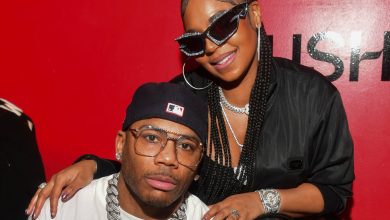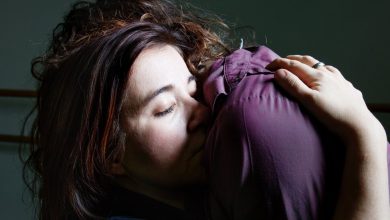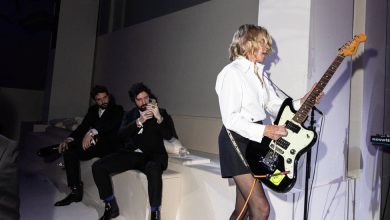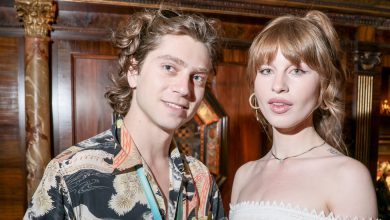Toyin Ojih Odutola’s Mesmeric Alternate Universes

Conversations with the Nigerian American artist Toyin Ojih Odutola tend to mirror the curious mood evoked in her ballpoint, pencil and charcoal drawings. They are adventurous, textured with abrupt tangents and suffused with humor. You might begin by gushing about Michaela Coel’s 2020 HBO mini-series, “I May Destroy You,” only to end up contemplating the history of precolonial Nigeria. Along the way, you might consider Nina Simone’s 1969 performance of “To Be Young, Gifted and Black,” captured in Questlove’s 2021 documentary “Summer of Soul”; laugh about the age-old beef between Nigerians and Ghanaians; lament tokenism in the creative industries; and eventually rejoice in the power of Octavia Butler’s mind.
At least, this is how our conversation over coffee in a small white office at the back of Jack Shainman Gallery in New York went last month.“There was so much empathy in her words,” Ojih Odutola said of Butler’s stories, as she fingered the sleeves of her sweatshirt. “It was a place to go, to explore safely and try ideas.” Indeed, reading Butler, whose science fiction novels are imbued with a deep sense of play and imagination despite their sometimes dark themes, changed Ojih Odutola’s life and inspired her most recent exhibition, “Toyin Ojih Odutola: A Countervailing Theory,” which opens at the Hirshhorn Museum in Washington, D.C., this week.
The show, which was commissioned by the Barbican in London and was on view there from August 2020 until earlier this year, takes the artist’s experiments with form and narrative to new levels. Featuring 40 large-scale monochromatic drawings and an electrifying soundscape by the Ghanaian British artist Peter Adjaye, it chronicles a forbidden relationship in a fictional ancient Nigerian civilization ruled by the Eshu, a class of female warriors, who manufacture male laborers called the Koba. The contours of this mythology had been gestating since Ojih Odutola read Butler’s“Patternmaster” (1976), a coming-of-age novel set in a deeply bifurcated society, at 19. But it wasn’t until 2019 that the artist decided to develop her own story, which, she said, was an attempt to write herself into “a history of Nigeria that felt safe, exploratory and queer.”
Ojih Odutola, 36, was born in Ife, Nigeria,and moved to the United States with her mother and younger brother when she was 5 years old. The family lived in California’s Bay Area, where her father was already based, until 1994, then relocated to Huntsville, Ala. Drawing, which she began to do at a young age, helped Ojih Odutola process these moves and her experiences growing up in the South. “There’s a diaristic quality to it that I love,” she said of the medium. “Even when there are mistakes in the work, it’s indicative to me of that 9-year-old who was just trying to copy what she saw in the world and interpret it onto another surface.”
Despite her early love of image-making, though, Ojih Odutola did not consider herself an artist until her first solo exhibition, “(Maps),” at Shainman in 2011. The show opened before her final year at California College of Arts, where she was studying painting and drawing. (Before graduate school, Ojih Odutola received her bachelor’s degree from the University of Alabama in Huntsville, where she majored in studio art and communications.) On view were hypnotic ink portraits depicting Black people, many of them shown mid-action, against plain white backgrounds and removed from any additional contextual clues: To whom does the hand descending from the top of “Letting the Ring Finger In” (2011) belong? And what is the figure in “So Sure of Yourself, You Are” (2011) looking at so intently? The exhibition signaled the emergence of a distinctive style defined by soothing pen strokes and vigorous shading that together create a rippling effect, as if the drawings themselves are pulsing with life.
Ojih Odutola refined this technique and pursued her interest in storytelling in “Toyin Ojih Odutola: To Wander Determined,” her 2017 solo exhibition at the Whitney Museum of American Art. Colors — an array of desaturated pinks, sky blues, forest greens and dirt browns — entered the images. And the18 nearly life-size charcoal, pastel and pencil portraits wove a capacious tale centered ontwo young Nigerian aristocrats who lounge in bed, roam their vineyards and write dispatches updating each other on their travels. The artist herself also took on a new role: “The works presented here are entrusted to the current Marquess of UmuEze Amara, TMH Jideofor Emeka, and his husband, Lord Temitope Omodele from the House of Obafemi,” Ojih Odutola wrote, assuming the voice of the deputy secretary of the couple’s estate, in a letter included in the exhibition. Losing herself entirely within this fully realized invented universe, she moved from merely translating experiences to constructing them.
The enthusiastic reception of Ojih Odutola’s work has both confirmed her talent and reflected the appetite of our current moment. In recent years, gallerists and viewers have been increasingly eager to see images of Black people in the kinds of art institutions from which they were long excluded. But Ojih Odutola is not interested in simply inserting Black faces into traditionally white spaces, or in mirroring back to white audiences what they presume to know about Black people. Instead, she wants to question the logic behind what we, as Black people, believe, and to burrow into the sense of uncertainty created by imagining alternative existences. Her images ask us to think beyond representation and to wrestle with the implications of power, to consider who gets to tell stories about the world.
With “A Countervailing Theory,” Ojih Odutola pushed these questions — and herself — even further. She returned to a monochromatic palette but instead of using white backgrounds, she drew with white charcoal and pastel on black canvas. For both iterations of the show, she specified that the works should be hung unevenly, and the walls painted in a monochromatic gradation to produce an undulating effect. And although she had never collaborated with another artist before, she approached Adjaye about creating a spectral soundscape that would reinforce the installation’s self-contained world. “He’s a really intuitive composer, and he was able to translate the beats that pictures can’t,” she said. “He was able to form this new, beautiful language of sound into this visual language, which is also otherworldly and strange.”
Ojih Odutola’s hope is that visitors will surrender themselves and their imaginations to the exhibition completely, enabling a kind of sacred experience. Toward the end of our conversation, just before she answered the questions below, she referenced a note she included (this time in the voice of a fictional Nigerian archaeologist) at the end of the show. “We appreciate and welcome all those who are willing to engage in this fascinating discovery with us,” the wall text reads, “despite not knowing the full extent of its meaning.” Though the statement is a coda of sorts for “A Countervailing Theory,” it is also a sentiment that rings true with her entire body of work, an invitation to submit to the fantasy and join her in her reverie.
What is your day like?
No day is ever the same. Because of the nature of being an artist now, there is so much more involved than just making a work. I wish I had a routine, but it’s just not possible.
How much do you sleep?
Six hours a night, give or take. I find nocturnal activity in the studio to be very fruitful, so sleep for me is predicated on that. The best work I’ve ever done, across the board, in any series, has been at night when I’m fully in the long haul. Around three or four in the morning, some things go down and it’s magical.
How many hours of creative work do you think you do in a day?
It’s incalculable. It never stops in the studio; it follows you everywhere.
What’s the first piece of art you ever made?
A perfect rendering of Timon from “The Lion King” (1994) when I was 9 years old.
What’s the worst studio you ever had?
I don’t think I’ve ever had a bad studio. Every studio I’ve been in, I’ve been grateful to have it.
When you start a new piece, where do you begin?
Each one is different, but usually there is an idea in the form of a question. That question is just the impetus because then there is the material. I could have this question but then the pastel could be like, “No, that’s not what we do.” It becomes a puzzle and every individual piece is an opportunity to test things and figure it out.
How do you know when you’re done?
When someone pries the work out of my hands.
How many assistants do you have?
None, but I wish I did; my life would be so much easier.
Have you assisted other artists before? If so, who?
I haven’t.
What music do you play when you’re making art?
That’s a good question. It depends on the mood, but mostly it’s jazz. I’ve been listening to a lot of Sonny Rollins lately.
Are you bingeing any shows right now?
I just started watching “Foundation” (2021) and “Scenes From a Marriage” (2021).
What’s the weirdest object in your studio?
A pair of Gucci loafers I bought recently in Italy. They were way too expensive and they were the worst shoes of all time. Every time I was walking, all these Italians were looking at me with pity, like, “What are you doing?” They are now my studio shoes as a reminder to me that there’s luxury within you and don’t need that to be justified with these petty little objects.
How often do you talk to other artists?
All the time. It’s the joy of my life. I love hashing out ideas.
What do you do when you’re procrastinating?
Oh, god. I watch movies, read. I like to walk a lot, it’s been a big thing for my mental health.
What’s the last thing that made you cry?
Thinking about my parents’ reaction to my show.
What do you usually wear when you work?
An apron, and whatever I feel is clean that day.
If you have windows, what do they look out on?
Another building, and it’s creepy. They are doing construction right now and it’s freaking me out because that means there are people who are going to move in soon, so I’ll need to get some curtains.
What do you bulk buy with most frequency?
Latex gloves.
Do you exercise?
No.
What are you reading?
“Tell Them I Said No” (2016) by Martin Herbert, “Open Water” (2021) by Caleb Azumah Nelson and “Blackspace: On the Poetics of an Afrofuture” (2020) by Anaïs Duplan. “Tell Them I Said No” is about artists, like David Hammons, who turned their backs on the art world. “Open Water” is just a beautiful story: It’s great to have good fiction that reminds you of parts of yourself that you might have forgotten. And “Blackspace” taught me how to lean back into the imaginary of not just Black bodies but also Black spirituality. We have been forced to think about our bodies so much in spaces but not so much about our spirits.
This interview has been edited and condensed.




